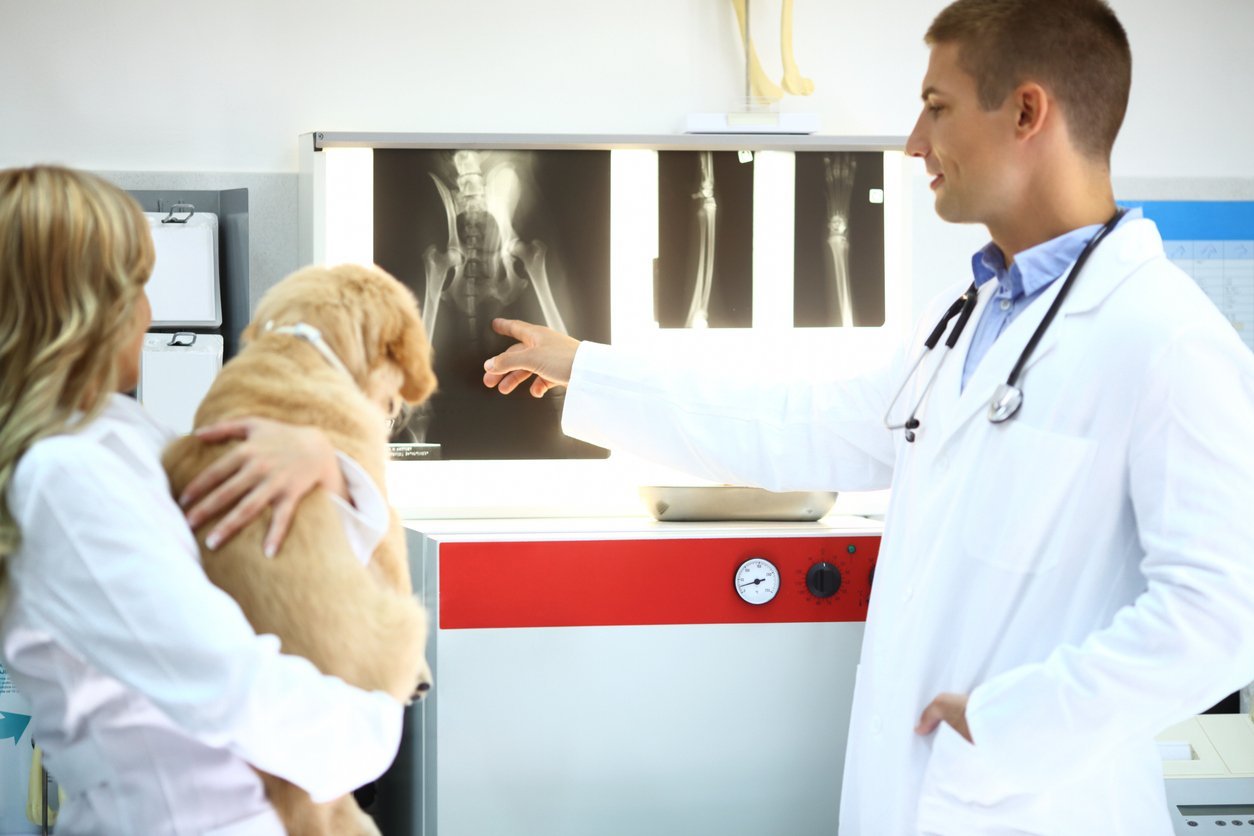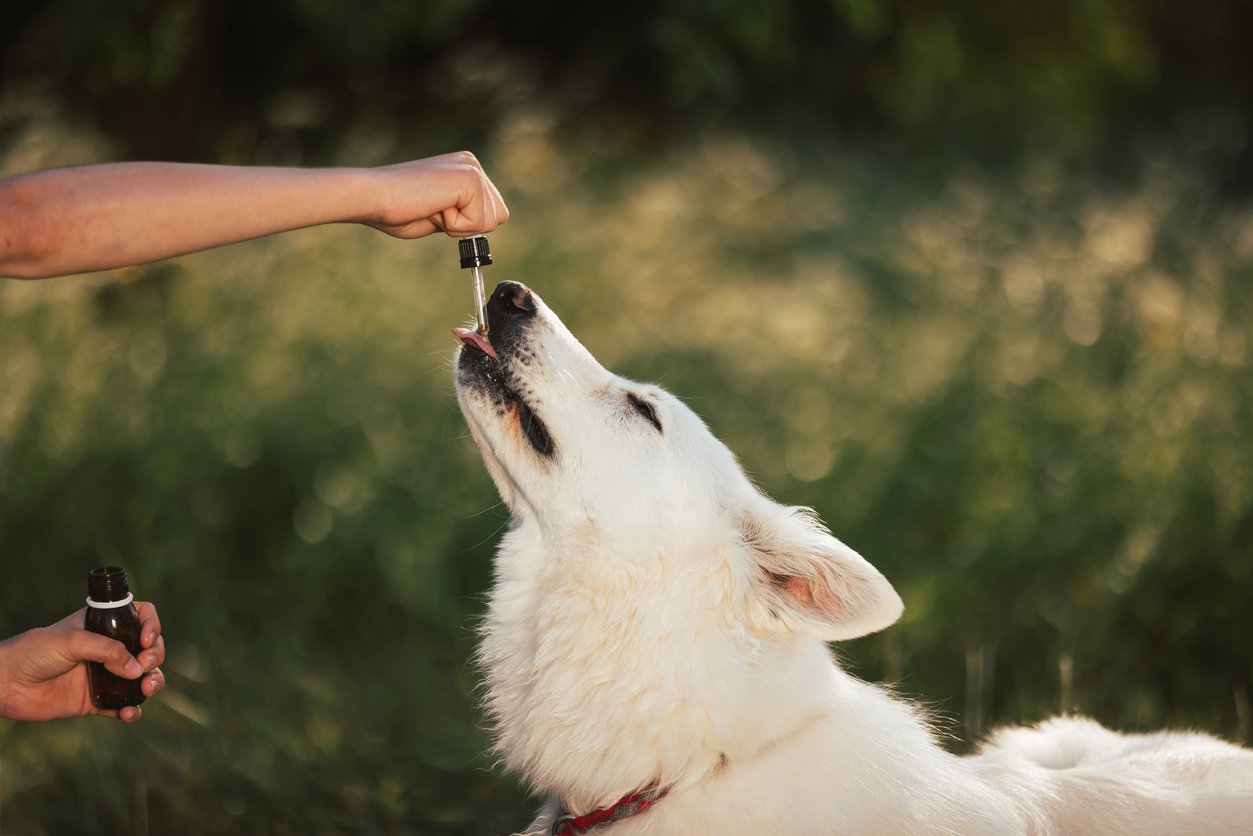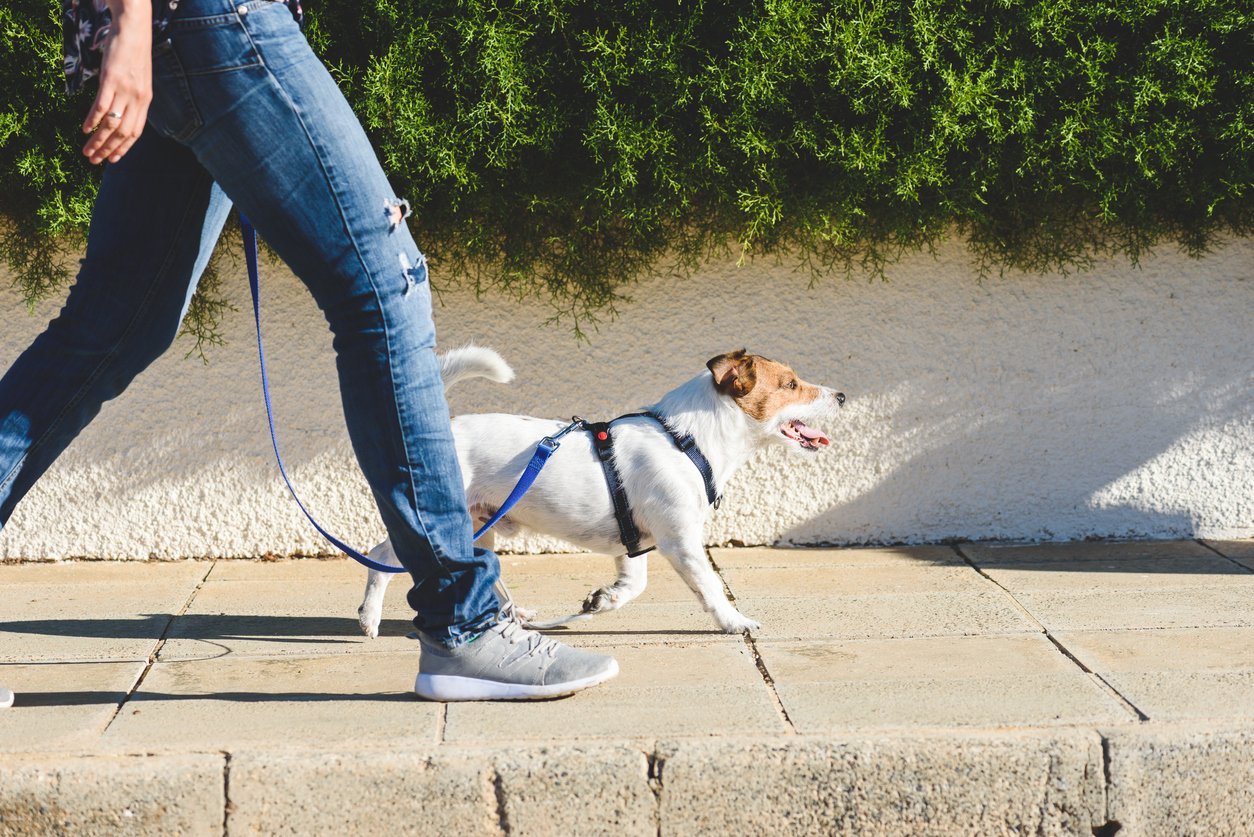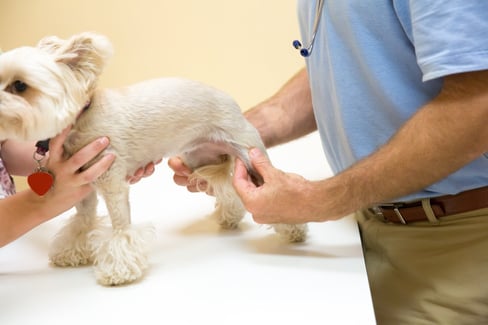Table of Contents
“Hip dysplasia dogs”. No dog owner wants to hear these 3 dreaded words. Nearly 16% of dogs are affected by hip dysplasia, so if you own a large or giant dog breed, chances are you may be faced with treating and preventing it.
This condition primarily affects large and giant breed dogs. A large dog weighs over 50 lbs and is about 24 inches, or two feet high. Breeds in this category include German Shepherd Dogs, Bernese Mountain Dogs, and Great Pyrenees, or any mix thereof, just to name a few.
Hip dysplasia may not always be completely avoidable. However, all is not lost! You can protect your lovable pooch and help make sure they live an active, happy life, even if they develop this condition. Let’s take a look at how hip dysplasia in dogs can happen and what you can do to prevent and treat it for your pup.
Hip Dysplasia Dogs – How Does it Occur?
Hip dysplasia is a deformity of the hip that typically occurs during growth. While larger dogs have more of a genetic predisposition for this condition due to their size, it can also develop in smaller dogs such as French Bulldogs and Pugs.
The hip joint consists of a ball and socket. Normally, as your puppy grows, these are supposed to grow uniformly for the hip joint to function properly. The ball fits perfectly into the socket, allowing the dog’s legs and hips to move as they should.
However, when hip dysplasia occurs, the ball and socket do not form properly, with one being disproportionate to the other. This causes looseness in the joint, in varying degrees, according to the severity of the condition.
Some dogs begin to display symptoms of hip dysplasia as young as 4-6 months old, but the most common age of onset is one to two years old.
In certain other cases, you may not see evidence of this condition until they’re older and they develop arthritis as a result.
Signs that your dog may be affected by hip dysplasia are:
- A decrease in physical activity
- Reluctance to get up or move from a sitting or lying down position
- Reluctance when it comes to climbing onto the couch, going upstairs, or jumping into your car
- Appearing wobbly or unsteady in their walk
- In more severe cases, hearing grating near the hip joint
Hip Dysplasia Dogs – Causes & Prevention
Should you begin to notice the signs of hip dysplasia, make an appointment with your veterinarian right away. They’ll need to do a physical exam, as well as a radiograph or X-Ray to determine if your dog is indeed suffering from this condition.
The earlier they diagnose the condition, the better the prognosis. After a definite diagnosis, your vet can then suggest treatment options.
While hip dysplasia cannot be completely prevented if your dog has a genetic predisposition, you can help to alleviate the problems it causes.
Three of the most common causes are:
- Accelerated growth
- Types of exercise
- Obesity
We’ll address each cause and provide some advice to prevent and alleviate the symptoms of hip dysplasia in your dog.
1. Accelerated Growth
Large dog breeds such as Golden Retrievers, Saint Bernards, and Mastiffs are particularly prone to hip dysplasia because of their faster growth rates.
Even though large mixed breeds have a lower rate of hip dysplasia than their purebred counterparts, they are by no means exempt.
As larger dogs grow, their bones often grow more quickly than supporting tissue like muscles, ligaments, and tendons. This results in the elasticity or looseness in the joint that defines hip dysplasia.
This looseness has two main consequences:
- Deformities – When the bones grow at such a rapid rate, they often don’t form properly. The femoral head and hip socket don’t mesh properly, causing the hip to slip in and out of place instead of sitting flush and supporting the dog’s movement.
- Less Support – The supporting muscles and tendons don’t have the time to form as quickly as they could have. This further contributes to the elasticity or looseness in the joint. On top of this, the weight that their fast-growing bones have to support can further contribute to the development and exacerbation of hip dysplasia.
Issue Prevention from Accelerated Growth
While it may not be entirely possible to change your dog’s growth rate, there are still steps you can take to help stabilize their growth and alleviate symptoms of hip dysplasia.
| Preventative Measure | Reason |
| Feed a diet specifically formulated for large breed dogs/puppies | Recognizing the special needs of large breed puppies and dogs, many dog food manufacturers have developed food especially for them. Some of these are even being breed-specific! The nutrients included help stabilize growth and support proper muscle and bone development. |
| Ask your breeder about hip certification | If you’re purchasing your dog from a breeder, it’s a good idea to make sure the breeder you choose pays special attention to the hip health of their dogs. Many reputable breeders of Goldens, for example, make sure they certify the hips of any pair they breed, often going back generations to ensure the hip health of their dogs. |
| Feed a high-quality supplement | Feeding a high-quality supplement with glucosamine can help prevent complications from developing later in life, or at least delay their onset by supporting the formation of structural tissues such as muscles and tendons |
2. Types of Exercise
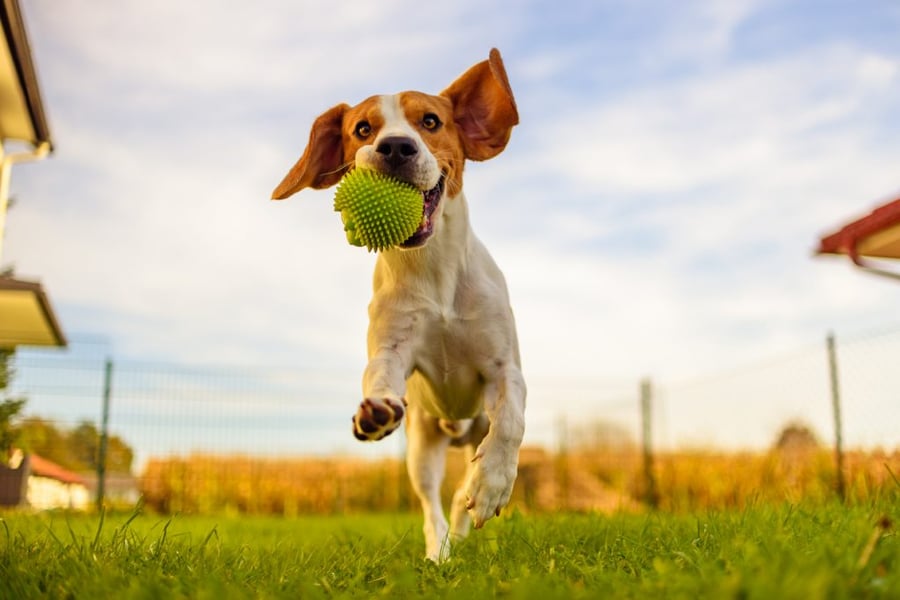
Several larger breed dogs love to get involved in sports and competitions, such as:
- Goldens and Labradors playing water sports or duck hunting
- Huskies and Malamutes pulling sleds
- Australian Shepherds competing in agility trials
While being involved in activities that require a lot of movement is healthy for your dog, it’s still advisable to be careful.
Competitions like agility and racing require your dog to make quick movements at a moment’s notice. In hunting, some of the terrains your dog needs to traverse may be uneven. All of these activities have the possibility of putting extra stress on the hip joint.
This stress can injure, or further loosen a hip joint that may already have formed improperly.
If your dog is affected, you may notice signs such as reluctance to perform certain activities. They may shy away from certain areas where they remember walking and feeling pain, or from climbing or performing other duties essential to their sport.
Even the casual pet owner has to be careful. Some dogs will exert themselves to the point of exhaustion – or injury.
Labs, for example, are well-known for their insistence on playing fetch for hours if you let them! While this exercise is great, you want to make sure they get a break-even if they don’t want to.
Issue Prevention from Exercise
Especially when it comes to training for competitions, there are a few steps you can take to reduce the risk of injury.
- Make sure your dog warms up. Before you even start training for the day, do a few warm-up exercises to help get their bodies moving. After this, you can ease them into more strenuous activities.
- Train on level ground. Understandably, this may not always be possible, as in say, a hunting setting. But choosing level ground wherever possible is recommended.
- Don’t let them overdo it. When it comes to casual exercise for your dog not involved in sports, make sure not to overdo it. Dogs love to play – and when they’re having a good time, they’re not willing to stop.
- Avoid ‘zoomies’. Anyone who owns a Staffordshire Terrier knows the ‘zoomies’ they will take around the yard or park, at full speed, with no intentions of stopping until something stops them – make sure that isn’t hip dysplasia!
3. Obesity
As many as 50-60% of the country’s dogs are obese – a startling statistic!
Being overweight causes many health problems for your dog. Obesity in dogs goes far beyond just appearances. We may think our dogs look adorable as their roly-poly bodies waddle through the house or yard but in reality, serious complications lie beneath the surface.
Fatty deposits inside the body can surround vital internal organs such as the heart and liver, making them function poorly. This can result in heart conditions, poor absorption of nutrients, and overall poor health for your beloved pet.
When it comes to musculoskeletal problems, such as hip dysplasia, the extra weight also ends up putting unnecessary strain on the muscles and joints. The excess weight can cause the joints to buckle, and move out of place – as in the case with hip dysplasia. It’s no wonder then that maintaining a healthy weight is key.
Issue Prevention from Obesity
| Preventative Measure | Reason |
| Feed a well-balanced diet | Proper nutrition for your pup is essential. Foods formulated specifically for larger breed dogs contain the nutrients they need for proper bone development as they grow. Consult with your veterinarian as to the best brand and food for your dog’s specific needs |
| Don’t overfeed! | For most dogs, saying that they love to eat is an understatement! Dogs are experts at sniffing out food and acting as if they’re starving. Because they seem so hungry, it might be tempting to give them more. But wait! Overfeeding can be another cause of obesity. Instead, talk to your veterinarian about the appropriate amount of food for your dog, taking factors like their age, activity level, and breed into consideration |
| Consider Dry over Canned | Canned food tends to have more calories and sugars than kibble – plus the kibble is far better for their teeth as well. If you have a picky eater, mixing in a little canned food or gravies made just for dogs can help. |
| Easy on the treats | Treats should be given in moderation as well. Some have extra fillers that can contribute to obesity, so feed sparingly. |
| Exercise regularly | Make sure to exercise your dog regularly as well. Long walks, or even a run in the yard or the park can do wonders for keeping your pooch in perfect shape. |
General Prevention Tips for Hip Dysplasia in Dogs
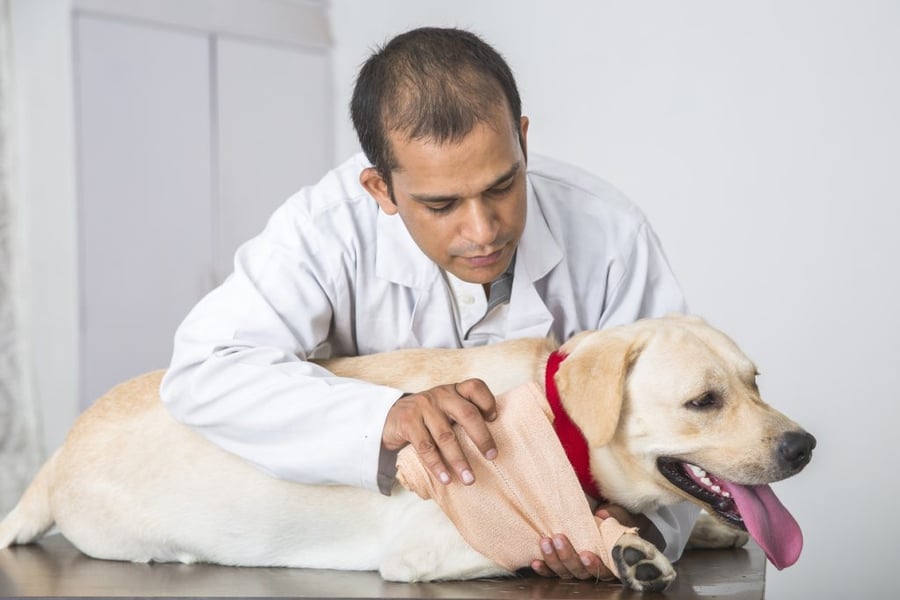
Hip dysplasia may not always be completely preventable but you can take steps to delay the onset, as well as make your dog more comfortable if they do develop the condition.
To recap, some of the best preventative measures to take are:
- Keep your dog at a healthy weight. Obesity can cause hip dysplasia to present itself sooner than later, as well as exacerbate the issue if they already have it. Feed appropriate foods and at times recommended by your vet for their age and activity level. Feed treats sparingly. If they aren’t already involved in sports or competitions, exercise them regularly and safely.
- Be careful how you exercise them. Many dogs that participate in competitions can develop injuries according to the sport. For example, if a racing Greyhound turns too quickly, or trips on uneven ground. Make sure any training and activity takes place on the ground that is as level as possible, and teach them how to move appropriately to avoid injury.
- Be mindful of the propensity for accelerated growth. Work with your vet to determine what steps you should take, and what to look out for to make sure that your dog doesn’t have issues with its growth. Should you notice signs or symptoms of Hip Dysplasia, contact your veterinarian immediately for a prompt diagnosis. The sooner treatment starts, the better the outcome.
- Feed a balanced supplement with glucosamine. While there are a variety of supplements available, not all of them are created equal. TRI-ACTA H.A. is specially formulated for the needs of dogs with problems such as Hip Dysplasia. It includes two forms of glucosamine, essential for proper support and production of cartilage, just like TRI-ACTA. However, TRI-ACTA H.A. also includes Hyaluronic Acid, which is key to replenishing the synovial fluid needed to properly cushion joints. This will thereby reduce pain and inflammation.
General Treatment Measures for Hip Dysplasia in Dogs
Despite employing many preventative measures, Hip dysplasia may eventually occur. But all is not lost! Fortunately, it isn’t a life-threatening condition, and there are many treatment options available.
Non-Surgical Options:
- Weight Reduction. If obesity was the cause or aggravator of hip dysplasia, reducing your dog’s weight can help alleviate symptoms and make your dog more comfortable.
- NSAIDs. Non-Steroidal Anti-Inflammatory Drugs. These are used to reduce pain and inflammation in affected joints. These medications can be administered by mouth or through injection.
- Physical Therapy. If the case of hip dysplasia isn’t too severe, physical therapy may be recommended. This can help your dog become more comfortable moving and reduce the pain and stiffness. Massages, most of which you can do at home, are often included when it comes to physical therapy.
- Hip Brace. For mild to moderate cases, a hip brace may be recommended. This can help your dog keep mobile without the need for surgery. Hip braces have a combination of support and compression, which helps your dog to move more freely, and without pain.
- Supplements. One of the most common treatment methods for hip dysplasia is supplementation. It’s often used in conjunction with other non-surgical and surgical methods. A good supplement with glucosamine and chondroitin sulfate are important components to help support and help restore the painful joints associated with hip dysplasia.
If over time the condition worsens or isn’t caught early enough, a vet may recommend surgery. There are many surgical options available, depending on your dog’s health and their candidacy for surgery. However, there are a few different surgeries that are common for the correction of hip dysplasia.
| Surgical Method | Procedure |
| Double or Triple Osteotomy | This procedure is best done only on younger dogs. It’s not suitable for older dogs that may have more brittle bones, or have developed arthritis. It involves cutting the hip joint in two or three places (hence double or triple) then rotating the joint so that it fits better with the femoral head. |
| Femoral Head Ostectomy (FHO) | This surgery is best performed on younger dogs but can be performed on mature ones as well. It involves removing the ball of the hip. That in turn makes the body create a false joint. This procedure doesn’t restore normal hip function, however, it is a successful strategy for pain management. |
| Full Hip Replacement (FHR) | This is when the entire hip joint – ball and socket – is removed, and replaced with an artificial hip joint. |
Depending on which surgery is performed, recovery can be lengthy – anywhere from 4 weeks for younger dogs, to 12 weeks in more mature dogs. In this timeframe, it’s important that your dog gets sufficient rest, with minimal exercise, according to the doctor’s orders.
Surgery typically requires pre, as well as post-operative care. Along with the medications recommended and prescribed by your veterinarian, supplements such as TRI-ACTA H.A. can help make recovery more comfortable for your beloved pet. It helps replenish the necessary tissues and synovial fluid needed for your dog to walk, and even run comfortably again.
How To Help Your Dog With Hip Dysplasia Now
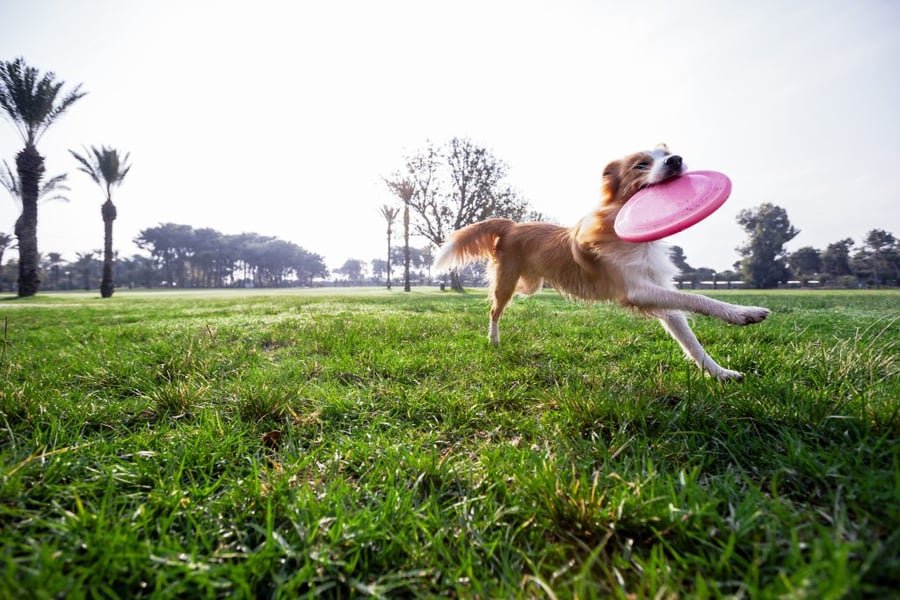
Hip dysplasia dogs. It’s an unfortunate occurrence among larger and some select smaller breeds of dogs. Fortunately, it’s not a life-threatening condition, and your precious pooch can still live a long, healthy, happy life!
You’ve already taken the first step, which is educating yourself on what hip dysplasia is, as well as how you can prevent and treat your dog so that they can have the best quality of life possible.
The next step is to make sure to stay vigilant. Be aware of any signs or symptoms that your dog may be suffering from hip dysplasia – this can occur even in young puppies. If you notice any symptoms develop, make sure that you visit your veterinarian immediately.
Feeding a top-notch supplement like TRI-ACTA H.A. can also be a game-changer when it comes to your dog’s hip health. Integricare has over 20 years of experience providing high-quality supplements for horse and pet professionals alike.
TRI-ACTA H.A. was formulated especially with dogs that suffer from conditions such as arthritis and hip dysplasia. Their quality formula contains no fillers or additives – just pure nutrition for a healthy musculoskeletal system that will help your dog feel their best!
Have questions? We have a ton of awesome resources to reference, blog articles to peruse, and of course, you can always reach out to us the old-fashioned way by asking us directly.
TRI-ACTA H.A. for Pets
Our maximum strength formula is optimally designed to accelerate the formation of cartilage, minimize inflammation, expedite the healing process, and improve joint conditions.

Newsletter Signup
Subscribe to our newsletter to receive the latest news and exclusive offers.
.jpg?height=2000&name=Cliick_Integricare-DISPLAY-REVISEDV2%20(1).jpg)
Proactive & Therapeutic Joint Supplements
When given daily, Integricare joint supplements recover bone and joint injuries faster and help prevent mobility injuries from happening in the first place.

